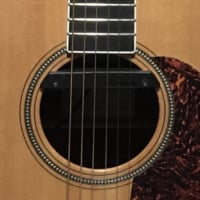Welcome! Here are the website rules, as well as some tips for using this forum.
Need to contact us? Visit https://heatinghelp.com/contact-us/.
Click here to Find a Contractor in your area.
If our community has helped you, please consider making a contribution to support this website. Thanks!
Cast Iron Radiator Comparison
Options
Phil_15
Member Posts: 13
I cannot find my copy of Dan Hs Every Darn Radiator. I should know how to make this calculation but I dont.
Given 2 slim line cast iron radiators:
a.(height 25)(length 58, 34 sections) (depth 3 3 tube)
b.(height 25)(length 58, 34 sections) (depth 4 4 tube)
With exactly the same system conditions (boiler, piping, circulator, etc.), if the 3 tube radiator(a), is replaced with the 4 tube radiator (b), what increase in performance should result. Intuitively one would think a 25% increase in improvement, but my seat of the pants experience is that the 4 tube slim line CI radiator performs much, much better than a 25% increase in BTU output. Why?
It cant be that the 4 tube offers less flow resistance and thus an increased flow rate. I dont know but would guess that they both have such low hydronic resistance that it would not be a meaningful factor. Does that extra tube and inch of depth add more than 25% surface area? Thanks for your help.
Given 2 slim line cast iron radiators:
a.(height 25)(length 58, 34 sections) (depth 3 3 tube)
b.(height 25)(length 58, 34 sections) (depth 4 4 tube)
With exactly the same system conditions (boiler, piping, circulator, etc.), if the 3 tube radiator(a), is replaced with the 4 tube radiator (b), what increase in performance should result. Intuitively one would think a 25% increase in improvement, but my seat of the pants experience is that the 4 tube slim line CI radiator performs much, much better than a 25% increase in BTU output. Why?
It cant be that the 4 tube offers less flow resistance and thus an increased flow rate. I dont know but would guess that they both have such low hydronic resistance that it would not be a meaningful factor. Does that extra tube and inch of depth add more than 25% surface area? Thanks for your help.
0
Comments
-
My book says...
The 3-tuber will put out 54 SF of radiation. The 4-tuber 68.0 -
As you see, the added tube is LESS when it comes to EDR.
54 / 3 = 18
54 + 18 = 72 compared to a rating of 68 EDR.
Why?
Little or no effective increase in area that actually radiates to the space--this especially true with the extremely narrow sections of the "slenderized" radiators.
With extremely little increase in radiative area, the added tube's output is almost pure convection. At 25" high, the added tube can convect nicely--were the radiator significantly higher, the convective currents would reach their maximum velocity well before they reached the top of the rad and the comparative EDR increase of the extra tube would be somewhat less.
Don't forget that EDR measurements became arbitrary to actual surface area as they were very accurately tested by their ability to condense steam.
Even in the days when EDR was based on surface area, the dead men knew that a two-column rad had the highest output per square foot and that output per unit of EDR decreased as more columns were added.
0 -
and yet
I have these two ci rads whose edr seems at odds with that idea:
Kitchen: American Radiator (ARCO) Thin Tube: 4 tubes, 25H, 4.5 deep, 20 sections @2.67sqft/sec = 53 EDR
Living Room: US Radiator Triton 3 Column, 22H, 9 deep, 20 sections @3sqft/sec = 60 EDR
The living room rad seems like it would weigh twice as much, has more exposed surface, is longer, deeper, higher and yet only yields 7 more edr.
David0 -
That's the difference
between column and small-tube rads. The small-tube design is newer, and can pack more EDR in a smaller space.
To Learn More About This Professional, Click Here to Visit Their Ad in "Find A Professional"0 -
so the newer european-style wall panel rads are better still?
something to consider if they're cast iron. maybe free up alot of floor space and put out even more relative EDR than they're rated for since very old ci rads must be de-rated a bit due to age.
David0 -
Not really.
For instance:
Say a 37" tall thin fin tube (not "slenderized" tube) radiator. 15 sections = 75 sq.ft. EDR with output of about 11,250 btu @ 170F average water temp. About 37 1/2" wide so it takes up a wall area of about 9 3/4 square feet.
Compare to Runtal panel rads for instance:
29" high (their tallest model).
The "convection enhanced" model would require about 5 1/2 lineal feet for similar output. That makes 13 1/4 square feet of wall area.
The standard model would require 8 lineal feet and take up 19 1/3 square feet of wall area.
From my reading of European literature, they consider cast iron radiators ideal, but generally WAY too expensive for new construction. Check out sale price of iron rads in Europe on ebay some day. You'll see that they sell for VERY good prices...
0
This discussion has been closed.
Categories
- All Categories
- 87.3K THE MAIN WALL
- 3.2K A-C, Heat Pumps & Refrigeration
- 61 Biomass
- 429 Carbon Monoxide Awareness
- 120 Chimneys & Flues
- 2.1K Domestic Hot Water
- 5.8K Gas Heating
- 115 Geothermal
- 166 Indoor-Air Quality
- 3.7K Oil Heating
- 77 Pipe Deterioration
- 1K Plumbing
- 6.5K Radiant Heating
- 395 Solar
- 15.7K Strictly Steam
- 3.4K Thermostats and Controls
- 56 Water Quality
- 51 Industry Classes
- 50 Job Opportunities
- 18 Recall Announcements
